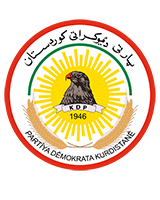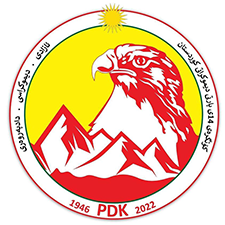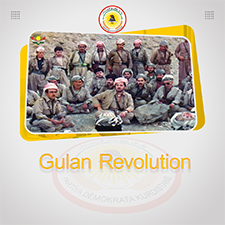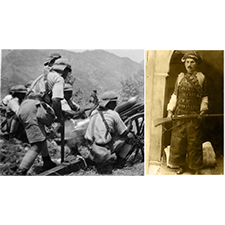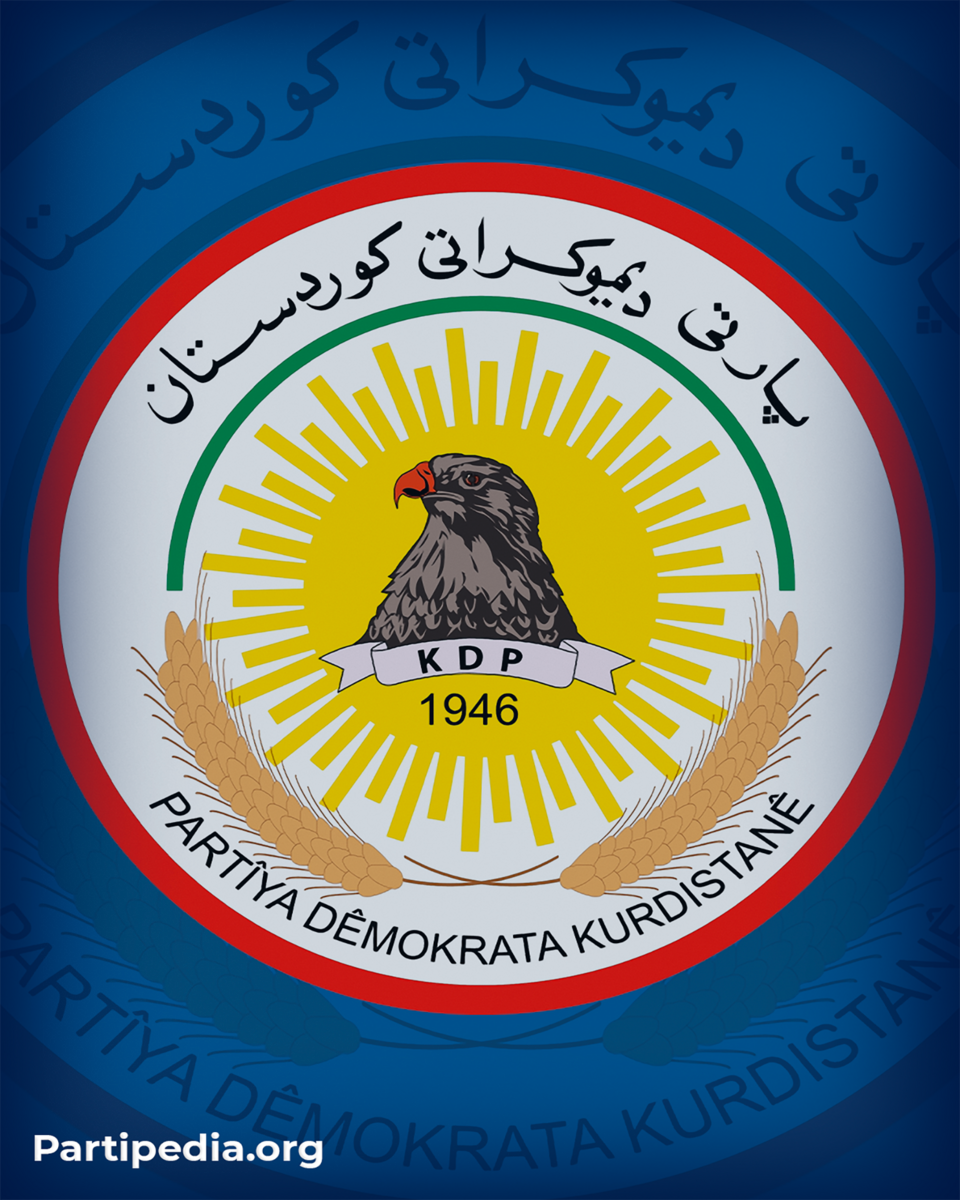The situation and preparations
In late 1980, members of the Party's interim leadership, who have separated from the nineth Congress, formed a new party called the “Kurdistan Democratic People's Party.” On November 28, 1980, the Iraqi Democratic National Front was created under the name of "Judd", which included the Kurdistan Democratic Party and six other Kurdistan and Iraqi parties. Later, the start of the eight-year war between Iran and Iraq on the September 22, 1980, which made the Kurdish forces busy throughout the war. During this period, the civil war was largely rooted in kurdish forces and parties, particularly the Kurdistan Democratic Party and Patriotic Union of Kurdistan, until it ended on the October 1, 1986 Tehran Conference, and the untimely death of Idris Barzani on January 31, 1987. The creation of the Kurdistan Front on May 2, 1988, which was consisted of seven Kurdistan Parties. Then the Iran-Iraq war stopped after eight years on August 20, 1988. The brutal attacks of the Ba'athist regime on Kurdistan in 1988, the chemical attack on Kurdistan, the (Anfal) of Kurdistan, and many other incidents were important incidents during this period.
According to the Party's internal procedure, the 10th congress should have been held in 1983 or 1984, but due to unwanted situations and developments, it was postponed until finally at the meeting of the Central Committee in May 1989, the decision to hold the Congress was made, and at the same meeting it was also decided a preparation committee for the Congress to be established. On the condition that none of them are members of the central committee. Thus, a committee led by Nechirvan Idris Barzani was formed in July of the same year for the purpose of appointing congress members among the military and party organizations the election began and by October 1989 the preparations for the congress was completed.
The Congress
The congress on December 2-12, 1989 in Heshmawa village, in the east of Kurdistan, with the presence of 332 elected representatives of the liberated areas outside the Iraqi government's authority and the elected representatives of the occupied territories were established under the slogan "Continuing struggle for democracy for Iraq and autonomy for Kurdistan".
The political report of The Congress was read by Ali Abdullah, secretary of the Central Committee, and then the telegraph message of 130 parties and political organisations friendly to the Party was read. By the decision of this congress, for the second time in the history of the Party, the vice president position was renewed, while there were two deputies in the first congress (the unification), but consequentially, the position of secretary was removed, which was present in addition to the deputy in the first congress, on this basis, with the suggestion of the president Masoud Barzani, Ali Abdullah, was appointed vice president and it was approved by the representatives of the congress.
A number of decisions were made at this congress, article 5 of the program was completely amended, changes were made to the authority of the Party's president, and the secretary's authority was no longer in place. It was decided that the vice president would be appointed by the president instead of the secretrait. Massoud Mustafa Barzani was elected president of the Kurdistan Democratic Party for the second time by a consensus of votes.
The Kurdistan Democratic Party's structure based on the internal procedure of the tenth congress was:
The cell (Shana), the main cell (Shana), the organizing committee, the district (Nawcha) committee, the branch (Liq) committee, the central committee, the political bureau and the president. The Central Inspectorate Committee was also elected by the Political Bureau and was formed by a member of the Political Bureau and two members of the Central Committee, in which the members were changed periodically.
The elected leadership of the tenth congress:
1- Nechirvan Barzani
2- Dr. Jarjis Hassan
3- Jawhar Namiq Salem
4- Dr. Rozh Nuri Shaways
5- Hoshyar Zebari
6- Fazil Mirani
7- Abdul-Muhayman Barzani
8- FalaKadin Kakayi
9- Hamid Afandi
10- Masoud Salayi
11- Rebwar Yalda
12- Izzadin Barwari
13- Azad Qaradaghi
14- Dr. Kamal Kirkuki
15- Zaeem Ali
16- Dr. Pirot Ahmad
17- Qadir Qadir Ali
18- Qadir Qahchakh
19- Dr. Ali Baba Shaways
20- Dr. Muhammad Salih Jumaa
21- Darwesh Abdulrahman Agha
22- Omer Osman Omer
The reserve members of the Central Committee were also elected as follows:
1-Dr. Nash Ghafur
2- Mahmud Muhammad Mahmud
3- Kamal Hassan Chawmar
4- Younis Rojbayani
5-Sayid Salih Baewari
In the first meeting of the Central Committee، members of the new political bureau were elected who were: Nechirvan Barzani، Fazil Mirani، Dr. Roj Nuri Shaways، Dr. Jarjis Hassan، Jawhar Namiq، Hoshyar Zebari and Zaeem Ali.
Due to the fact that the situation in Kurdistan was completely devasted after the Anfal campaigne، after the Congress، it was attempted to make changes in the branches and send the Peshmerga brigade back to Kurdistan.
Sources:
• Muhammad Mala Qadir: Khabatnama: The History of the Party and the Immortal Barzani, 3rd Edition, (Erbil- Aras Printing house- 2012).
• The history of the Kurdistan Democratic Party, The Congress and The Conference (internal programs and procedures) and the Kurdistan Democratic Party's Inscopepiedia Board, 2nd Edition, (Erbil- Roxana Press- 2021).
• Habib Mohammad Karim, The history of Kurdistan Democratic Party, Iraq, 1946-1993, (Duhuk - Khabat printhouse - 1998).
• Tenth Congress of the Kurdistan Democratic Party, Zagros Newspaper, First Issue, February 1990.
• Karim Habib Haji, My Memoirs in the Glorious Revolutions of Ayul and Gulan, Second Edition, (Dohuk, Khani Press, 2016).
• Kurdistan Democratic Party, the internal procedure of the tenth congress، (np - Khabat press - nd).
•Encyclopedia Board Archive: Interview with Dr. Nash Ghafur (Pirmam, December 16، 2018).
•List of candidates of the Kurdistan Democratic Party for the National Council in Kurdistan، The Peshkawtin Newspaper، Kurdistan Students Union and Kurdistan Democratic Youth Union - Iraq، No. 26، May 1992.
• The fighter1 friend Said Saleh passes away، Khabat newspaper، Organ of the Kurdistan Democratic Party, No. 618، March 1992.




